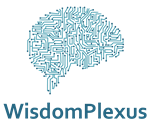Did you ever stop to think about how some of the most cutting-edge applications have the ability to present you with real-time information, almost the instant it occurs? Consider your online bank statement, an e-commerce website monitoring your package, or even social media streams updating in real-time. It is not magic; it is the power of change data capture (CDC).
CDC is a technology that detects and monitors changes within a database so that systems can process and replicate the changes in real time. From updating a customer record to processing a financial transaction or synchronizing data between multiple platforms, CDC ensures each modification is picked up cost-effectively.
But what is the CDC, and how does it function? Why is it so important in today’s data management? In this blog, we will learn everything about change data capture, its advantages, and how companies use it for faultless data integration.
What is Change Data Capture (CDC)?
Change data capture is a collection of software design patterns for detecting and monitoring changes in data so that something can be done in response to those changes. CDC remains concerned with only the changes in data. It does not change the entire database. CDC is like having a super-efficient detective watching your data all the time and alerting you when something new or any change appears.
For example, a big online store has thousands of orders every minute. If the system has to go through the entire database every time to look for new orders, it would drastically slow down operations. CDC addresses this issue by monitoring only changes so that new orders can be processed immediately without burdening the system.
Understanding the Growing Importance of Change Data Capture (CDC)?
You might be thinking, “Why not just copy all the data from time to time?” That’s a fair question but imagine how much data companies produce on an hourly basis. Copying everything would be like draining and refilling a swimming pool just to check if the water level got a bit lower. It is slow and needs massive amounts of computing power, and it introduces a large delay in data availability. That is why changing data capture (CDC) is so useful.
How Does the CDC Work?
CDC operates by reading the transaction logs of a database (or redo logs or write-ahead logs). Whenever something changes to a new record, an update, or a deletion, the database logs it in those logs. CDC tools read those logs and apply the changes to other systems in real time or near real time. CDC cab be implemented in different ways:
-
- Trigger-based CDC: Database triggers are defined to fire whenever there is a change, capturing the change data. Although effective, this solution can incur overhead on the database.
- Log-based CDC: This solution reads transaction logs (such as MySQL’s binlog or PostgreSQL’s WAL) to detect changes without affecting database performance.
- Query-based CDC: Periodically polls the database looking for changes, which is easier but less efficient than a log-based CDC. Of these, log-based CDC is the most efficient and popular, as it has negligible performance impact while guaranteeing real-time data synchronization.
Benefits of Changing Data Capture
1. Synchronization: One of the main benefits of CDC is that it allows for real-time data synchronization. For example, you have several systems that must share identical up-to-the-second information. This may be your sales system that must update the inventory system, or your customer service system must display a recent change of address.
CDC provides for these integrated systems to receive only the necessary changes, delivering them rapidly and effectively. It maintains all your applications and data stores in synchronization. This eliminates the possibility of working with old or inconsistent information.
2. Precise Work: CDC minimizes the extra burden on your source systems. Rather than the necessity of processing large queries to draw complete datasets, CDC simply needs to recognize and retrieve the changed rows.
Your operational databases can thus keep running optimally without taking on analytical or synchronization processes, sticking to their core functions. This translates directly to improved performance, quicker operations, and a smoother experience for all concerned.
3. Data Warehousing & Analysis: Companies use CDC to keep their data warehouses running smoothly and up to date. When building a data warehouse, you need to pull in data from lots of different systems. Instead of copying everything, which would be slow and disruptive, CDC allows you to update only the newly changed data.
This means your data warehouse always has the latest information without needing big, time-consuming refresh cycles. This means your data warehouse always has the latest information without needing big, time-consuming refreshes. That's super important for businesses that rely on real-time data to make smart decisions quickly.
Why Is Change Data Capture Important?
With data driving the decision-making process in today’s world, the latest information is paramount. This is why changed data capture is a game-changer for companies:
Real-time Data Integration
CDC allows for real-time updates. It makes sure that all systems work with the most current data. Whereas traditional batch processing updates data in chunks. This leads to delays.
Reduced System Load
CDC only tracks what has changed; it does not check or track the complete database. This reduces the strain on databases and improves performance.
Improved Data Accuracy
By capturing every modification and change, CDC helps to avoid missing important updates. This keeps your data clean and consistent across platforms.
Smarter Insights, Faster Decisions
Real-time updates mean your reports and dashboards are always up-to-date, offering precise insights. This helps businesses to make quicker, better decisions.
Easy Cloud Syncing
As more businesses move to the cloud, CDC makes it simple to keep data in sync between on-site and cloud systems.
Typical Use Cases of Change Data Capture
CDC is applied in most industries for optimizing operations. Some of the major applications are
Data Warehousing and Analytics
Companies apply CDC to maintain data warehouses current without complete reloads, allowing quick reporting and analysis.
Database Replication
CDC guarantees that data changes in a master database are replicated immediately to slave databases to ensure consistency.
Microservice and Event-Driven Architectures
CDC facilitates propagating changes in data in distributed systems among microservices to support event-driven processes.
Fraud Detection and Compliance
Banks and other financial institutions employ CDC to track transactions in real time to identify anomalous behavior and maintain regulatory compliance.
Synchronization of Customer Data
CDC keeps CRM and ERP systems synchronized so that customer data is always current.
Implementation Challenges of the CDC
CDC has many benefits, but it has some flaws too:
-
- Database Support: Log-based CDC is not supported by all databases, so other options must be used.
- Complexity of Initial Setup: Setting up CDC tools can take technical skills.
- Processing High-Volume Changes: For systems with large volumes of transactions, CDC needs to be tuned in order to prevent bottlenecks.
Despite all these challenges, the benefits of the CDC are more helpful for businesses, and it has become a necessity for data-driven businesses.
Final Words!
Change data capture is no longer a technical concept. It is a basic facilitator of contemporary and reactive data structures. It allows companies to respond quickly to any change. It makes sure about data consistency throughout disparate systems and creates strong analytical capabilities that capitalize on the latest insights. If you are committed to getting the greatest value from your data and keeping your systems running continuously with the best up-to-date information, then learning and using change data capture is a necessity.
For such informative blogs, visit WisdomPlexus!
FAQs
Q: What is change data capture?
Ans: Change data capture (CDC) is one method of determining and monitoring only the new or modified bits of information within your databases and not having to constantly re-check them all. It is similar to having an intelligent system inform you only when something particular has been added, modified, or deleted.
Q: What is the purpose of the CDC in ETL?
Ans: CDC helps ETL to track only the changes made in the data rather than copying everything. This makes data transfers faster, reduces the system load, and keeps the reports and dashboards up-to-date.
Q: Which database supports CDC?
Ans: MySQL, PostgreSQL, Oracle, and SQL Server support CDC through transactional logs.
Recommended For You:
5 Features of a Modern Data Architecture
Mastering First-Party Data Strategies: Elevating Your User Data Collection




